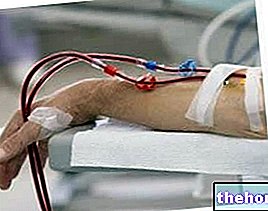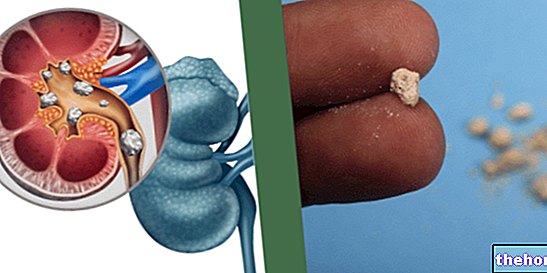What is Chronic Pyelonephritis
Chronic pyelonephritis is the result of recurrent kidney infections that can cause scarring of the renal parenchyma and progressive impairment of organ function, particularly in the context of obstruction. The risk is that the inflammatory process progressively destroys the tissues, causing in the phase terminal renal failure, to the point of requiring a kidney transplant.
Treatment
In the case of chronic pyelonephritis, it is necessary to carefully evaluate the urinary tract by means of diagnostic investigations capable of highlighting any abnormalities in the urinary tract (such as urography or cystography) and possibly resort to surgical correction. In fact, in the presence of obstruction of the urinary tract, infections are often resistant to therapy and tend to recur. Several surgical procedures can be performed to correct these conditions; based on the anomaly, the doctor can opt for example for:
- Pyeloplasty, to repair the renal pelvis in case of an obstruction of the uretero-pelvic joint.
- Transurethral approach by cystoscopy to remove kidney stones and / or "basketing" procedure to recover small kidney or ureteral mineral aggregations.
- Surgical correction of congenital anomalies leading to vesicoureteral reflux (example: reimplantation of ureters).
Excluding the anatomical alteration, the treatment is aimed at eradicating the infection and correcting the causes that predispose to chronic pyelonephritis. If the cause is detectable in a "urinary tract infection, it is possible to try to eradicate the causative pathogen with an attack antibiotic therapy and subsequent long-term maintenance therapy with low-dose disinfectants. It may be necessary to continue antibiotic therapy to prolonged periods of time, even for a few months (up to 3 to 6 months).
The follow-up of the treatment can be carried out by means of a urine culture performed one week after the end of the drug therapy, showing the elimination of the pathogen. In cases of flare-up of the disease, therapy will be similar to that of acute pyelonephritis.Antibiotic therapy of relapses aims to reduce the number of acute episodes of infection, facilitating the healing process and stopping the progressive functional deterioration of the kidney. Other types of medical treatment include the prescription of drug therapy to control hypertension. and renal insufficiency. Surgical removal of the diseased kidney (nephrectomy) is indicated in the forms of severe unilateral chronic pyelonephritis.
Prognosis
If adequate treatment is given abruptly, the disease tends to halt its progression to renal failure and the expected results are generally quite good. Most individuals develop renal scarring and kidney atrophy. Antibiotic treatment for infection and antihypertensive therapy for high blood pressure are generally effective. The result of various surgical procedures (pyeloplasty, stone removal and nephrectomy) is generally positive.
Complications
Complications of chronic pyelonephritis include recurrent infections with resistant bacteria and the possibility of incurring kidney damage that progressively leads to the formation of scars, with reflux nephropathies, renal failure and secondary hypertension (high blood pressure that occurs following parenchymatous changes or when the renal artery, or one of its branches, is stenotic). The evolution of chronic pyelonephritis can induce pionephrosis (severe and extensive kidney disease characterized by the collection of pus, with destruction of the renal parenchyma), focal glomerulosclerosis (nephrotic syndrome, caused by alterations of the renal glomeruli, with non-selective proteinuria, hypertension and microhematuria), urosepsis (systemic inflammatory response propagated by the urinary tract), chronic renal failure, which, in the terminal phase, can even lead to the need for an organ transplant .
A rare and particular variant of the chronic form is xanthogranulomatous pyelonephritis, characterized by the formation of yellow-orange abscesses and granulomas in the medullary area, with severe renal destruction and a clinical picture that may resemble renal cell carcinoma or other inflammatory processes borne by the renal parenchyma. Most patients experience relapsing fever, urosepsis, anemia, pain, kidney stones, and loss of function of the affected kidney. Bacterial cultures of kidney tissue are commonly positive. Usually, a nephrectomy (removal of the kidney) is required for definitive treatment for xanthogranulomatous pyelonephritis.
As with all other forms of chronic kidney disease, the patient should be monitored for progression of chronic pyelonephritis and for the development of conditions such as hyperlipidaemia, hypertension, diabetes and deterioration of renal function.
Other articles on "Chronic Pyelonephritis Therapy"
- Chronic Pyelonephritis: Causes, Symptoms and Diagnosis
- Pyelonephritis
- Acute pyelonephritis
- Pyelonephritis Diagnosis
- Management of acute pyelonephritis: therapy, course and complications
- Preventing Pyelonephritis
- Pyelonephritis - Medicines for the treatment of Pyelonephritis
















.jpg)











